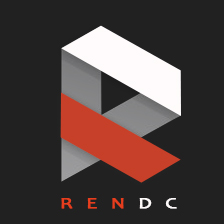☛ At CTP Thermique we work with some of the largest scale machinery in our industry. Tell me about the types of machinery you are most experienced with.
☛ We put a lot of effort into ensuring CTP Thermique uses only the best parts and materials available. What do you know about our cutting edge machinery?
☛ How will the knowledge gained from your most recent position help you succeed in this role with CTP Thermique?
☛ The health and safety of our employees is top priority at CTP Thermique. How would you react if your supervisor asked you to perform a task that you were not comfortable with?
☛ At CTP Thermique we measure productivity in a variety of ways. In your opinion, what are the most important performance metrics for this position?
☛ Our reputation is very important to us. In which ways do you feel CTP Thermique stands out from the crowd?
☛ Some of our competitors use social media to promote their brand. How do you feel about the social media presence at CTP Thermique? Do you feel this type of marketing is relevant to our industry?
☛ Our motto at CTP Thermique is to work smarter, not harder. If you had a workplace motto, what would it be?
☛ We have a variety of shifts at CTP Thermique. Do you have any restrictions on your availability?
☛ Do you have experience working in a unionized environment? What are your thoughts on union based roles?
☛ Tell me about a time that you have helped a co-worker accomplish an important goal.
☛ What was the biggest change you have had to deal with in your career?
☛ Tell us about a time when you were particularly effective on prioritizing tasks and completing a project on schedule.
☛ What are your career aspirations beyond this job?
☛ Why are you the best candidate for us?
☛ How would you describe your written communication skills?
☛ How would you describe your relationship with your customers or clients?
☛ Name me a few things you were asked to do in your last position that you weren't trained for.
☛ When have you had to think outside of the box to solve a problem?
☛ If you were given a choice, which work related task would you leave for last? Why?
☛ Tell me about yourself.
☛ With your experience, what contributions do you believe you will make to our department?
☛ On a scale from 1 to 10, how honest are you?
☛ How can we motivate you on the job?
☛ Give me an example of a time when your communication skills helped you be a more effective leader.
☛ When have you effectively delegated tasks to your employees?
☛ How do you handle situations that could cause you to be late or miss work?
☛ What types of activities keep you busy, outside of work?
☛ What makes you a great problem solver?
☛ Is compensation the most important factor for you when taking a new job?
☛ What part of this career brings you the most stress?
☛ Tell me about a time there was a serious conflict. How did you resolve it?


